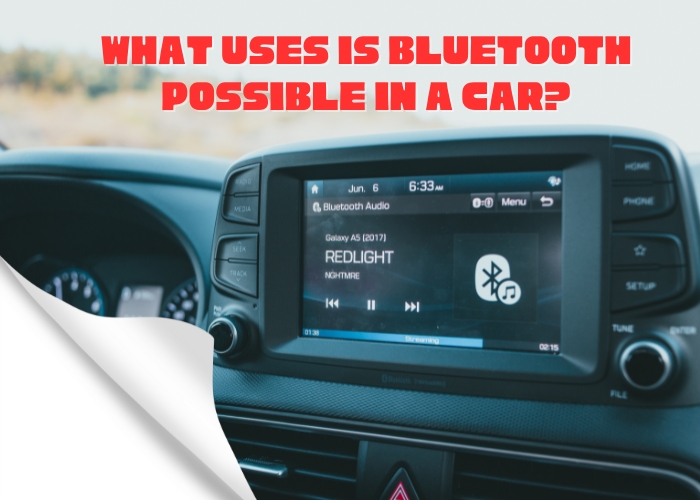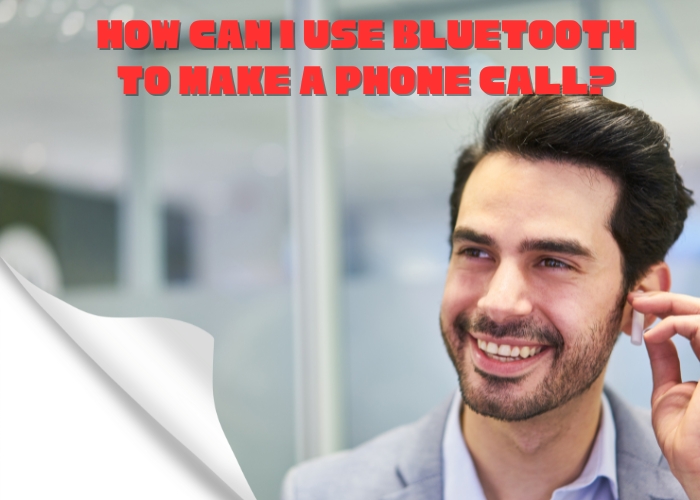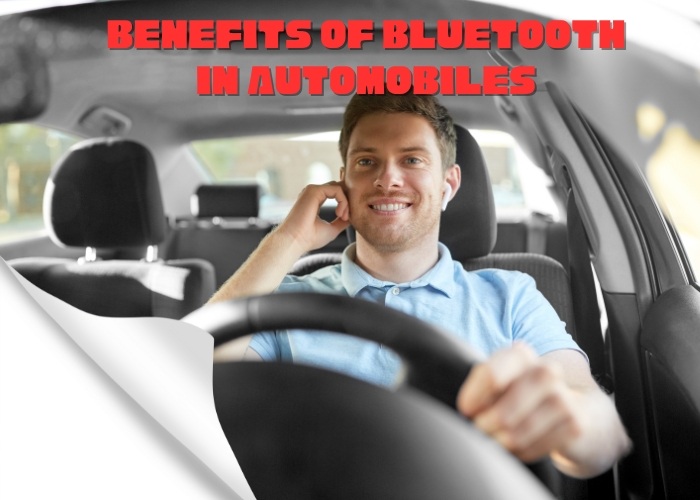Bluetooth encompasses more than simply the peculiar-looking headsets people use when strolling around urban areas on their phones. With more cars equipped with Bluetooth for hands-free calls and an increasing number of aftermarket devices that do the same and send digital music files to an automobile’s stereo system, technology is becoming increasingly prevalent in cars. Let’s talk about when Bluetooth came out in vehicles.
In the upcoming years, backseat entertainment systems may support Bluetooth video streaming, and cars may include Bluetooth sensors that alert drivers of low tire pressure. Let’s talk about when did Bluetooth come out in vehicles.
Bluetooth: What is it?
As we’re concentrating on this, Bluetooth is a global wireless data transmission technology that may connect a device to suitable peripherals like earbuds or your car’s infotainment system.
The name of the technology comes from Harald Bluetooth, a Danish ruler renowned for bringing people together, as this technology connects two devices and enables wireless data transfer.
But remember that Bluetooth is only meant to be used within proximity, so don’t think you’ll be able to connect elsewhere. This implies that to couple your phone with the gadget, you must be near it.
What uses is Bluetooth possible in a car?

When did Bluetooth come out in cars? It may connect to your phone and do specific tasks without requiring you to connect the phone to the device via a cord. The primary purpose of this is to use the car’s speakers to listen to your music or make hands-free phone conversations. Bluetooth allows you to play music, podcasts, or audiobooks from your smartphone on most cars. Launch the appropriate app, press play, and let the car handle the rest. You can use the touchscreen, head unit, and, in certain situations, steering wheel controls to skip, pause, and rewind tunes.
You can use Bluetooth to connect to your car’s wireless Apple CarPlay or Android Auto systems instead of plugging your phone into a USB port.
Which is the First Bluetooth-enabled car?
It can be challenging to identify which car was the first to use Bluetooth, but this is different when figuring out which automakers were the first to use the technology.
Chrysler was among the first automakers to equip their cars with Bluetooth.
In 1999, the carmaker unveiled the first system with Bluetooth capability. The UConnect interface was exclusive to Chrysler, the only manufacturer in North America to provide this feature.
2008 saw the release of further cars with Bluetooth, such as the Ford Focus and Nissan Sentra. Honda revealed they had included Bluetooth in their 2009 Civic EX cars with GPS navigation that same year.
How to set up Bluetooth on your phone and in your car
The specific steps in connecting a smartphone with an automobile’s Bluetooth infotainment system can differ depending on the phone and car model. Still, the basic procedure is for when Bluetooth came out in cars. as follows:
- Turn on the ignition and give the infotainment system some time to load.
- Turn on the Bluetooth on your phone and confirm that it is configured to be discoverable.
- Look for your vehicle in the list of Bluetooth devices on your phone. The device name you’re looking for may usually be found in this list under the “settings” menu. The brand or model of the car and its identification number will usually comprise the list.
- After choosing your vehicle, wait for the infotainment system and phone to pair. After this procedure is finished, you’ll be prepared to proceed. In the future, automobiles ought to recall phones as well.
It’s important to note that some systems can show a four-digit number when you first try to link the car and phone. They will be paired if you select “yes” or “confirm” if the same number appears on both devices.
How can I use Bluetooth to make a phone call?
Your phone should immediately import your contacts once associated with your car’s infotainment system. This will allow you to swiftly make calls using the touchscreen, buttons positioned on the steering wheel, or voice activation. Double-check the privacy settings on your phone to see if this still needs to happen.
The phone should ring via your car’s speakers once you’ve chosen who to talk to and initiated the call. If they answer, you should then hear the person’s voice. The infotainment system in the automobile will allow you to answer calls, and once more, everything will sound through the speakers. You can talk hands-free without holding anything using the built-in microphone in the automobile or the phone itself.
Ensure the call volume is up and your audio output settings are set to Bluetooth if the phone is unquestionably paired but you cannot hear any audio.
How can I use Bluetooth to stream music?

You will be surprised to see when Bluetooth comes out in cars. After pairing your phone with your car’s infotainment system, you must launch your preferred audio streaming app (like Audible, Apple Music, or Spotify) and choose your preferred music to listen to.
Switch the audio input on your infotainment system to Bluetooth once your streaming app is ready. After this, turn on your car’s speakers to listen to your music, podcasts, audiobooks, etc., by pressing the play button. Check the volume on your phone and automobile if you cannot hear anything.
Benefits of Bluetooth in Automobiles

Although the primary use of Bluetooth technology in automobiles is for hands-free texting and phone calls, there are additional advantages. These are a few of them.
Wireless Media Streaming
Do you enjoy listening to your favorite podcasts or belting songs while driving? You may effortlessly accomplish both thanks to Bluetooth technology, which enables wireless media streaming.
Depending on your setup, Bluetooth may also allow you to see videos, which will amuse everyone in your car.
Cut Down on Cable Mess
Because it can conceal things and restrict your access to the spaces it takes up, cable clutter can make you feel more anxious while driving. Furthermore, untangling cables can be painful, particularly when essential wires are involved.
Some wiring systems become superfluous with Bluetooth technology, keeping your cabin tidy and orderly. For instance, you can use Bluetooth to quickly connect to your infotainment system with a few taps instead of a tethered plug.
Identify Issues with Your Car
If the check engine light is on in your car and you don’t have a scan tool, you can get the issue code with an OBD-II Bluetooth adapter. After inserting the adapter into the OBD port, pair it with your smartphone over Bluetooth. Once linked, you can get issue codes using programs like OBD Auto Doctor and Torque Pro.
But remember that the fault code is not enough to diagnose the problem. Additional testing and inspections are still required to verify and fix the issue.
Preserve the Battery Life of Your Smartphone
The fact that Bluetooth uses little of your phone’s battery means you don’t have to worry about it dying while you’re delayed in traffic. This is another benefit of Bluetooth. Of course, apps can still drain your battery, especially if you’re taking a lengthy vacation.
The Drawbacks of Bluetooth in Automobiles
The risk of Bluetooth hacking is the one drawback for cars equipped with the technology. A hacker may exploit flaws in any Bluetooth-assisted symptom; your vehicle is no different.
The NCC Group conducted a trial wherein the vehicle’s Bluetooth connectivity enabled the researcher to unlock a Tesla and drive away without needing a key. This security risk may affect cars that use the phone as the primary feature.
Conclusion:
Bluetooth is a wireless technology with a short range that connects devices using frequencies. You may use your vehicle’s Bluetooth system by pairing your smartphone with it.
You can make and take calls without touching your phone once you have paired your smartphone with your car’s Bluetooth. Depending on the infotainment system, voice control for sending and receiving text messages may also be available.

